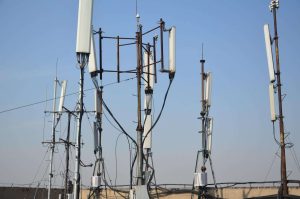5G এর জন্য, হুয়াওয়ে 5G মাইক্রোওয়েভ প্রকাশ করেছে “1+2” মিনিমালিস্ট স্থাপত্য
[স্পেন, বার্সেলোনা, ফেব্রুয়ারি 27, 2019] এ 2019 ওয়ার্ল্ড মোবাইল কনফারেন্স, Huawei built a minimalist microwave bearer network for 5G. Huawei released the industry’s first 5G microwave “1+2” মিনিমালিস্ট স্থাপত্য. In different bearer scenarios, the “1” plane dual-band antenna + “2” arbitrary frequency band (6~86GHz) RF unit combination provides a maximum 20Gbps bandwidth with a minimalist structure, saving more than 50% of the tower space occupation and Installation and delivery costs, which marks Huawei’s 5G microwaves to go further in ultra-wide and minimal.
দ্য “1” of the 5G microwave “1+2” minimalist architecture is a dual-band antenna that supports any combination of two frequency bands. It solves the problem of insufficient single-band spectrum resources. When multiple frequency bands are required to provide large bandwidth, multi-plane antennas need to be installed. The problem. In the process of bandwidth evolution, operators do not need to add an antenna to another frequency band, which relieves the space pressure of the tower, saves TCO, and makes upgrading easier.

Combined with the industry’s only Carrier Aggregation (OC), it integrates four channels in one hardware, and the transmission capacity is four times that of the traditional ODU, which can reduce the number of ODUs by 75%. Such “2” RF components in different frequency bands can provide up to 8 channels and support 10+ Gbps bandwidth. When upgrading and expanding, it is not necessary to deliver the tower several times, making it easier to upgrade the microwave bandwidth.
With the advent of the 5G era, the need for large bandwidth has become the biggest challenge for bearer networks. To meet the 10 times increase in bandwidth, microwave customers often need to use multiple frequency bands and multiple carriers in combination to achieve double the bearer bandwidth. With the traditional microwave solution, the tower is upgraded frequently, the delivery cost is high, the hardware on the tower is stacked many times, the space is getting bigger and bigger, and some stations cannot even be upgraded.
In 2018, Huawei released the first 5G microwave in the industry. Up to now, Huawei 5G microwave has been applied in more than 20 customer networks around the world. At the beginning of 2019, Huawei 5G Microwave won the Graham Bell “Innovative Telecom Solution” award in India, which is a high recognition of the 5G microwave technology innovation and commercial value. On this basis, ভিতরে 2019, Huawei further introduced the 5G microwave “1+2” minimalist architecture, and through technological innovation, it can achieve large bandwidth while minimizing the space requirement of the tower during deployment. On the basis of the current 4G network, without increasing the space occupied by the tower, it can increase the capacity by 10 times, and smoothly support the 5G network. একই সময়ে, the upgrade of the tower is upgraded to one time, and the investment of 4G is equivalent to investing 5G to protect customers. investment.
Zhou Yuefeng, chief marketing officer of Huawei Wireless Network, said: “When Huawei 5G microwave provides bandwidth comparable to optical fiber, it has further simplified deployment and smooth upgrade, which can promote the faster construction of 5G network.”









